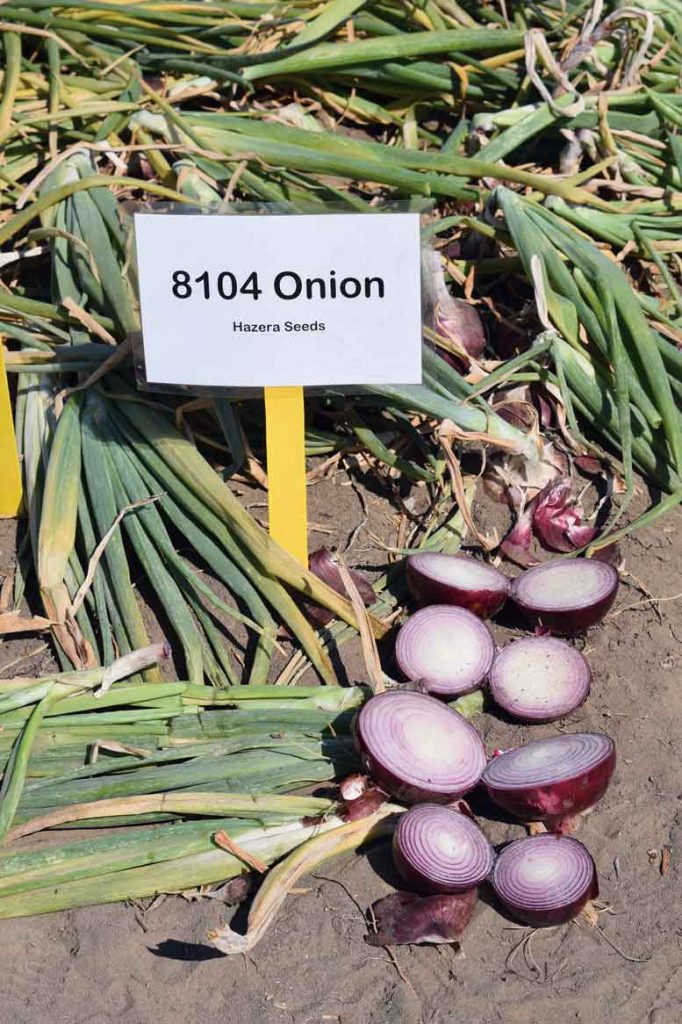|
Click to listen to this article
|
Story and photos by Denise Keller, Editor
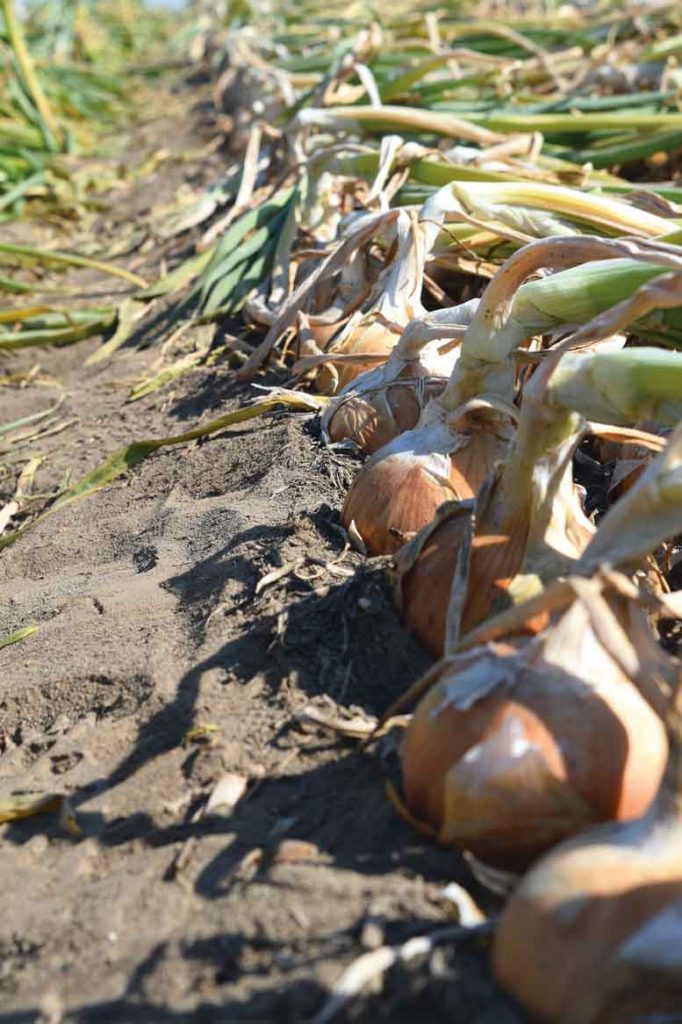
2022 was a tough year to grow onions across the Columbia Basin of Washington, mostly due to erratic spring conditions and a rather warm summer. Despite the early-season weather challenges, the Washington State University (WSU) onion cultivar trial produced some good results. Stands were uniform, most of the cultivars produced bulbs uniform in size and shape, and most had good yields. There were fewer colossal onions this year compared to some past trials, but there were plenty of jumbos. The size and appearance of many of the red cultivars was especially impressive to evaluators.
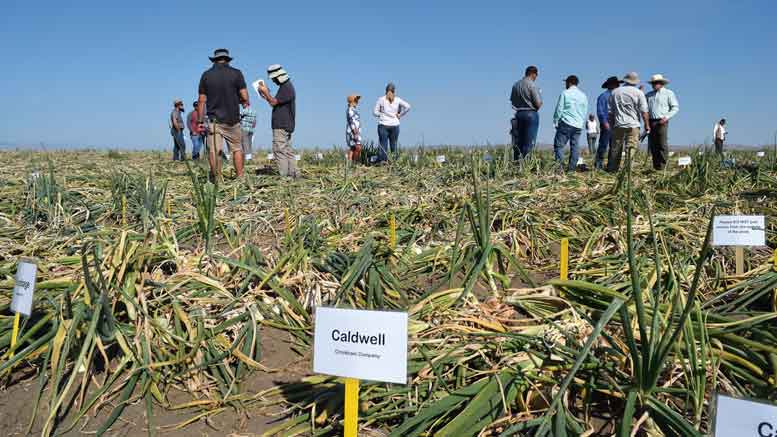
With 53 varieties from seven seed companies on display at Grigg Farms near Quincy, Washington, on Aug. 25, field day attendees were invited to check out the trial and listen to project updates and recommendations from researchers.
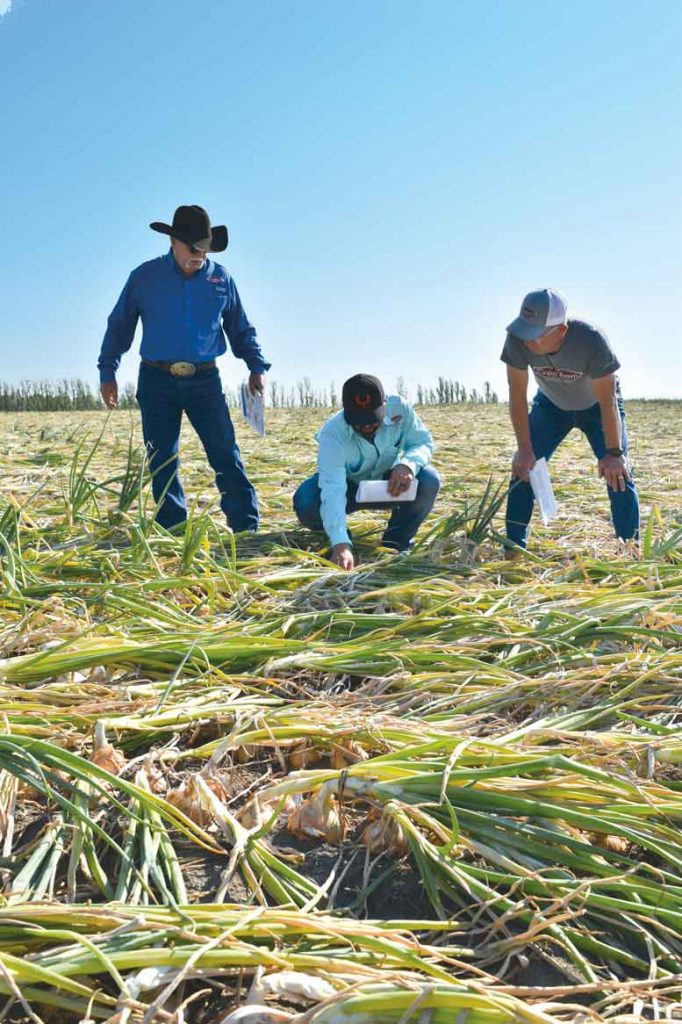
Tim Waters, a WSU area extension educator, urged growers to be on the lookout for yellow nutsedge. The weed is becoming increasingly problematic in the Columbia Basin, among other regions. The weed is fairly easy to identify once you’ve seen it a few times, he said. However, it’s often mistaken for grass at first glance. Although it does look similar to grass, yellow nutsedge has a triangular stem and generally has three leaves growing from the base of the plant.
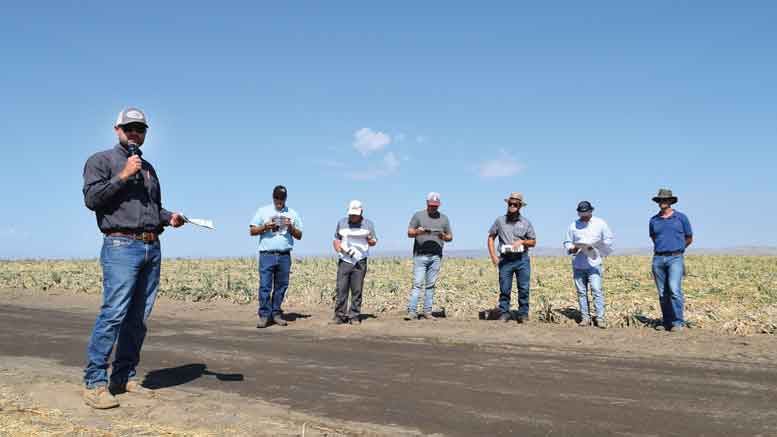
While the weed does produce seeds, yellow nutsedge is mostly spread by its underground tubers or nutlets. The tubers are about one-third the size of a pencil eraser and spread very quickly via tillage equipment. Any equipment including planters, rippers, discs or any machinery that gets soil on it can move these troublesome tubers. To prevent this, growers should work non-infested parts of the field first and finish in the part of the field that has yellow nutsedge. In addition, it is vital to very thoroughly clean any equipment that has been in an infested field before it is used in another field.
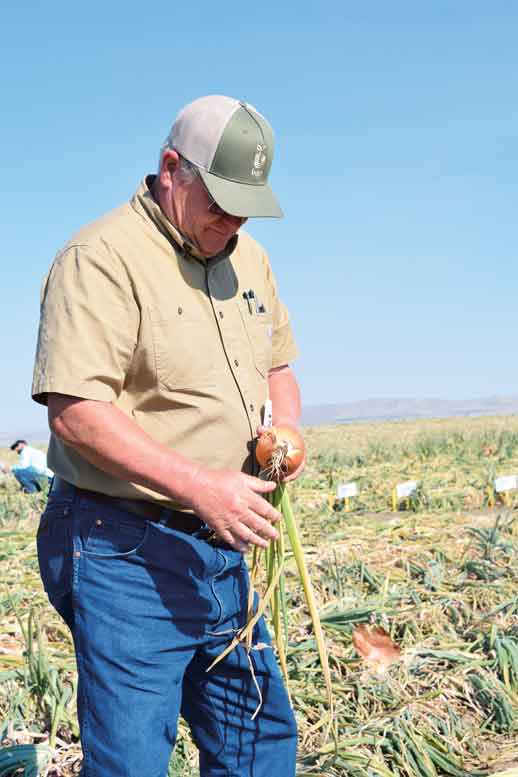
Small patches of nutsedge can be eradicated by digging down 1.5 or 2 feet to remove the plant and all its tubers. The use of Roundup is not very effective, Waters cautioned, as it doesn’t translocate enough through the plant to really kill it. In onions, Outlook can be somewhat effective for yellow nutsedge suppression, but not the best, he added. Instead, it’s important to attack nutsedge while the field is planted in a rotation crop. Specifically, herbicides labeled for use in corn, such as Sandea and Yukon, can be effective.
